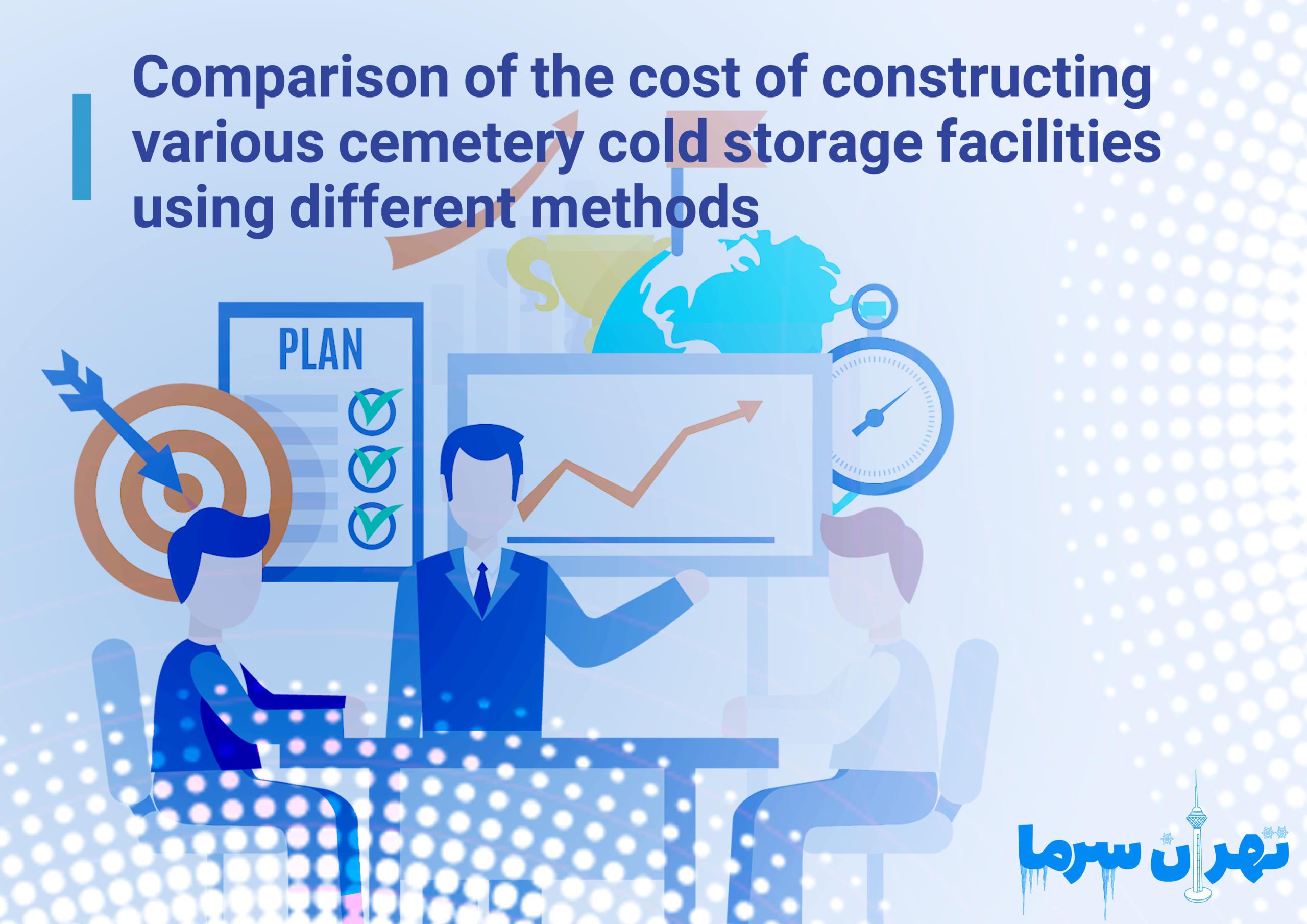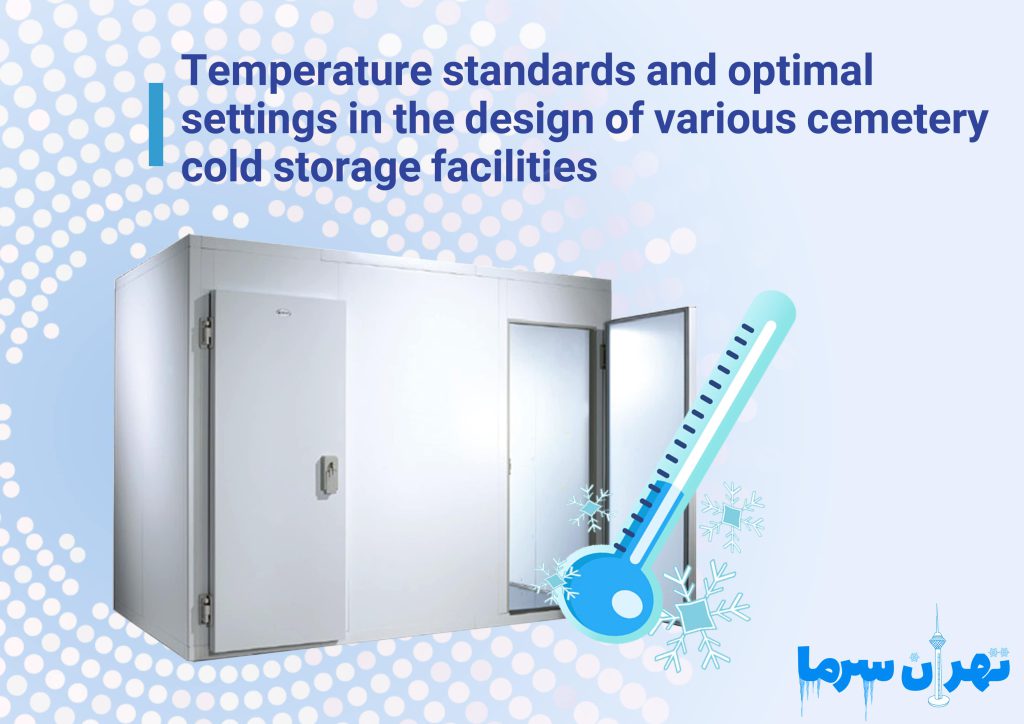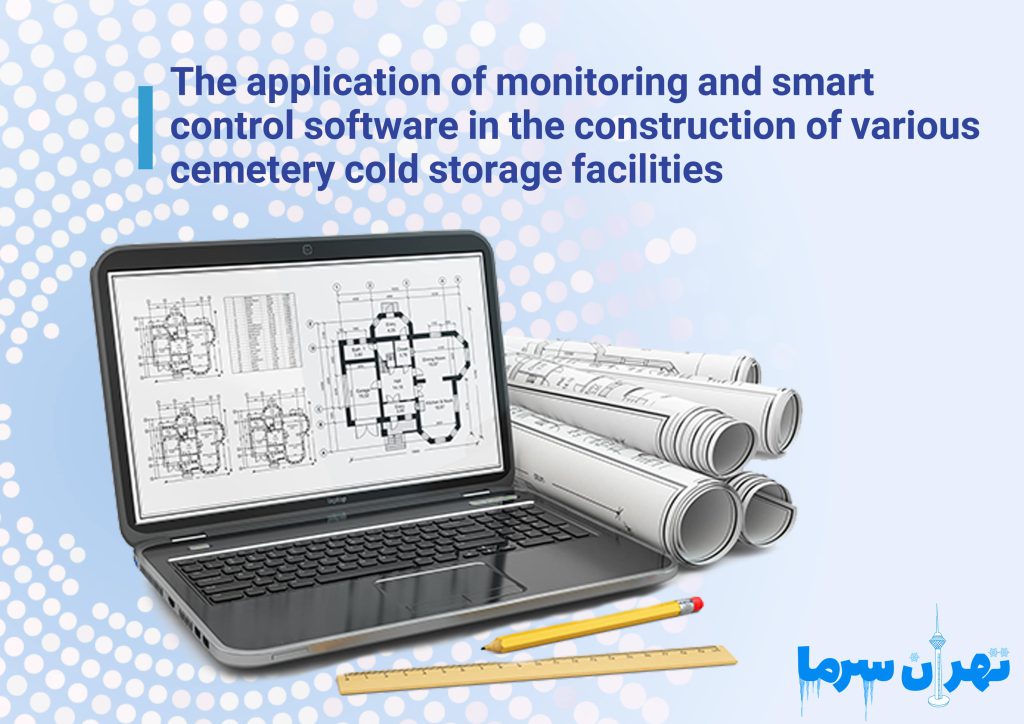Uncategorized
Comparison of the construction costs of different types of cemetery cold storage using various methods

The construction of various types of cemetery cold storage using advanced equipment and sanitary standards enables long-term preservation of bodies. The design of cemetery cold storage units depends on factors such as capacity, required temperature, and insulation type to ensure optimal efficiency. Additionally, the cost of constructing different types of cemetery cold storage depends on factors such as area size, type of compressor, quality of insulated panels, and refrigeration systems.
1. Construction of Cemetery Cold Storage and Refrigeration Systems
One of the main factors influencing the cost of cemetery cold storage construction is the type of refrigeration system. Various refrigeration systems, including compression systems, absorption systems, and refrigeration systems using different refrigerant gases, each have their own costs.
For example, compression systems typically use large and expensive compressors that require more maintenance and repairs, whereas absorption systems may have a lower initial cost but consume more energy. These differences can significantly impact the overall project cost of building a cold storage facility.
2. Design of Cemetery Cold Storage and Selection of Materials
In addition to refrigeration systems, the choice of building materials also plays a crucial role in determining construction costs. Insulated panels are commonly used for wall and ceiling insulation in cold storage units, and their material and thickness can greatly affect the overall cost.
Polyurethane or polystyrene insulated panels, which are widely used in many projects, have higher costs due to their unique thermal and physical properties. However, they offer greater efficiency in maintaining temperature and reducing energy consumption. On the other hand, using cheaper materials such as foam insulation and rock wool may lower construction costs, but due to their lower efficiency, they typically lead to higher long-term operational expenses.
3. Cost of Constructing Different Types of Cemetery Cold Storage
Another important aspect of cost comparison is the design and size of the cold storage unit. Smaller cold storage facilities designed to hold a limited number of bodies generally have lower costs, whereas larger and more advanced cold storage units, built for storing more bodies or medical equipment, require higher expenses. These costs depend on the design of refrigeration systems, ventilation systems, electrical installations, and other infrastructure components, all of which must be carefully analyzed.
Temperature Standards and Optimal Settings in Cemetery Cold Storage Design
In designing different types of cemetery cold storage, the internal temperature must be precisely regulated. Typically, for long-term body preservation, the optimal temperature ranges between 2 to 4 degrees Celsius. This temperature is low enough to prevent decomposition and decay but should not be so low that it causes tissue freezing, leading to physical damage to the bodies.
To maintain a stable and optimal temperature throughout the cold storage, advanced refrigeration systems are required. These systems must be designed to ensure uniform temperature distribution across all sections of the facility and respond quickly to external temperature changes without sudden fluctuations.
Additionally, energy efficiency is a crucial consideration in cemetery cold storage construction. Optimal temperature settings not only prevent body decomposition but also help reduce operational costs.
Refrigeration systems should be capable of precise temperature control and should immediately issue alerts or automatically adjust settings if the internal temperature exceeds or falls below the permitted range. The use of smart thermostats and remote control systems can significantly enhance efficiency and accuracy.
Another key factor in designing temperature control for cemetery cold storage is humidity regulation. Excessive humidity can promote the growth of fungi and bacteria, accelerating decomposition. Therefore, precise humidity control, along with temperature regulation, is essential.
Ventilation and humidification systems must be designed to maintain humidity at an optimal level. The recommended humidity level for cemetery cold storage is generally between 50% and 60%, which prevents bacterial growth and decomposition while preserving the structural integrity and quality of the bodies.
Comparison of Refrigeration Compressors Used in Cemetery Cold Storage Construction
Refrigeration compressors generally fall into two main categories: piston (reciprocating) compressors and scroll compressors. Each type has specific characteristics that make it suitable for particular conditions.
Piston compressors are widely used due to their simple design and cost-effectiveness. They can generate high pressure and provide significant cooling capacity, making them a suitable choice for large industrial cold storage facilities. However, they consume more energy and require more maintenance, potentially increasing operational costs. Additionally, they produce more noise, which can be a drawback in cemetery cold storage where silence is necessary.
In contrast, scroll compressors are known for their quiet and smooth operation, making them an ideal choice for cemetery cold storage. These compressors use a unique design with two interlocking spirals to compress gas efficiently with minimal noise. This feature is particularly valuable in environments where maintaining silence and tranquility is essential.
Scroll compressors are also more energy-efficient than piston compressors, reducing operational costs. However, they may not be suitable for very large cold storage facilities, where piston compressors still remain a more viable option.
Rotary compressors are another type commonly used in cold storage, including cemetery facilities. They have a simple structure, operate quietly, and are ideal for small to medium-sized cemetery cold storage units due to their compact size and lightweight design. Compared to piston compressors, rotary compressors are more resistant to pressure fluctuations and offer greater durability. Additionally, they provide better temperature control and lower energy consumption. However, they may not be suitable for large-scale projects requiring complex cooling needs.
Screw compressors are another option used in cemetery cold storage, particularly for large-scale and industrial applications. These compressors use two intermeshing screws to compress gas, providing high pressure and significant cooling capacity.
Screw compressors are highly efficient, consume less energy, and are ideal for large cemetery cold storage units. They are also known for their durability and low maintenance requirements, making them a preferred choice for long-term use.
Choosing the right type of compressor for cemetery cold storage depends on various factors, including maintenance costs, noise levels, and cooling capacity. For small to medium-sized storage units, scroll or rotary compressors may be more suitable, while for large industrial cold storage facilities, piston or screw compressors remain the best options. Consulting with technical experts and considering specific environmental and economic conditions will ensure an optimal selection.
Safety and Hygiene Considerations in Cemetery Cold Storage Design and Construction
Safety and hygiene considerations in the design and construction of cemetery cold storage are of paramount importance, as these facilities are used for preserving bodies and other sensitive biological materials. Strict hygiene protocols must be followed to prevent contamination and disease transmission.
Proper ventilation systems must be installed to control air quality and humidity, along with precise refrigeration systems to maintain optimal temperature levels. Additionally, fire safety must be ensured through the use of non-flammable materials and fire detection and suppression systems.
Moreover, to prevent hazards from toxic gases or carbon dioxide buildup, effective ventilation and gas control systems must be in place.
Application of Monitoring and Smart Control Software in the Construction of Various Cemetery Cold Storage Facilities
Monitoring and smart control software plays a vital role in enhancing the efficiency and safety of refrigeration systems used in cemetery cold storage facilities. These software solutions enable precise monitoring and control of temperature, humidity, pressure, and other environmental conditions within the storage units, allowing managers and operators to assess the real-time status of the facility.
With these systems, sudden changes in temperature— which could lead to corpse decomposition or sanitary issues— can be detected and corrected promptly. Additionally, smart software can send automatic alerts and implement preventive measures, such as adjusting refrigeration or ventilation settings in case of potential failures.
These technologies not only help maintain optimal storage conditions but also analyze data to optimize energy consumption and reduce operational costs.
Construction of Various Cemetery Cold Storage Facilities in Collaboration with Tehran Sarma Engineering Company
Designing and constructing various types of cemetery cold storage facilities in collaboration with Tehran Sarma Engineering Company is an excellent choice for specialized and sensitive projects in this field. With an experienced team and extensive technical expertise, the company is capable of designing and building cold storage units that fully meet the sanitary and safety requirements for corpse preservation.
Tehran Sarma Engineering Company utilizes state-of-the-art refrigeration systems and globally recognized standard equipment to precisely control the temperature and humidity of cold storage units, preventing issues such as decomposition or contamination. Furthermore, the company provides technical consultation and after-sales services tailored to each project’s specific needs, ensuring long-term durability and optimal efficiency of the cold storage facility.
Partnering with Tehran Sarma gives project owners the confidence that their cold storage units will not only meet the highest technical and sanitary standards but will also be cost-effective and economically viable.
For more information on collaboration terms, visit the Tehran Sarma website or contact us at:
📞 09121906418
📞 02177972256
The construction of various cemetery cold storage units, following strict sanitary standards and using modern equipment, helps extend the preservation of corpses. The design of these facilities is tailored to the specific needs of each site, considering factors such as capacity, refrigeration systems, and insulation type. Moreover, the cost of building cemetery cold storage facilities depends on factors such as unit dimensions, compressor type, material quality, and equipment used.
Source:
🔗 Daikin
🔗 Cold Storage US




 سردخانه
سردخانه برق
برق کمپرسور
کمپرسور کمپرسور بیتزر
کمپرسور بیتزر کمپرسور کوپلند
کمپرسور کوپلند کمپرسور بوک
کمپرسور بوک کمپرسور دانفوس
کمپرسور دانفوس کمپرسور منیروپ دانفوس
کمپرسور منیروپ دانفوس کمپرسور امبراکو
کمپرسور امبراکو کمپرسور پاناسونیک
کمپرسور پاناسونیک کمپرسور سابکول
کمپرسور سابکول کمپرسور کوپلند
کمپرسور کوپلند کمپرسور اسکرال کوپلند
کمپرسور اسکرال کوپلند کمپرسورفراسکلد
کمپرسورفراسکلد کمپرسور رفکامپ
کمپرسور رفکامپ کمپرسور اسکرال دانفوس
کمپرسور اسکرال دانفوس گاز مبرد
گاز مبرد گاز R22
گاز R22 گاز R134
گاز R134 گاز R404
گاز R404 گاز R407
گاز R407 گاز R410
گاز R410 گاز R508
گاز R508 کندانسور هوایی
کندانسور هوایی اواپراتور
اواپراتور اواپراتور آرشه
اواپراتور آرشه اواپراتور صابکول
اواپراتور صابکول اواپراتور آسه
اواپراتور آسه اواپراتور نیک
اواپراتور نیک اواپراتور آرتک
اواپراتور آرتک اواپراتور نوین
اواپراتور نوین اواپراتور تبادل کار
اواپراتور تبادل کار درب
درب ساندویچ پنل
ساندویچ پنل فن سردخانه
فن سردخانه روغن کمپرسور سانیسو
روغن کمپرسور سانیسو متعلقات سردخانه
متعلقات سردخانه